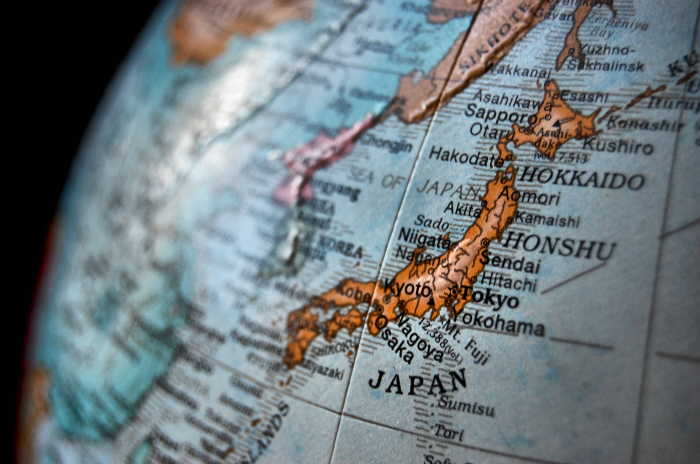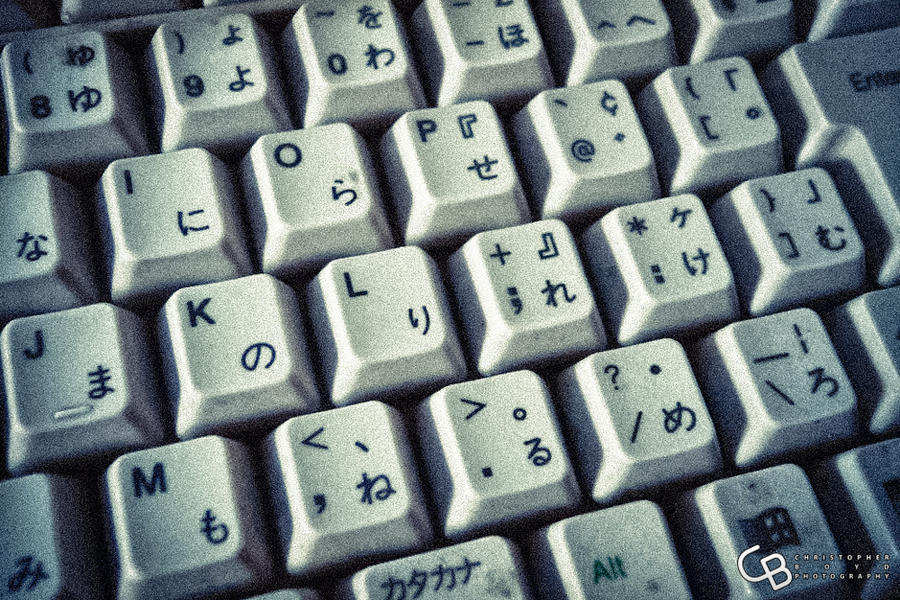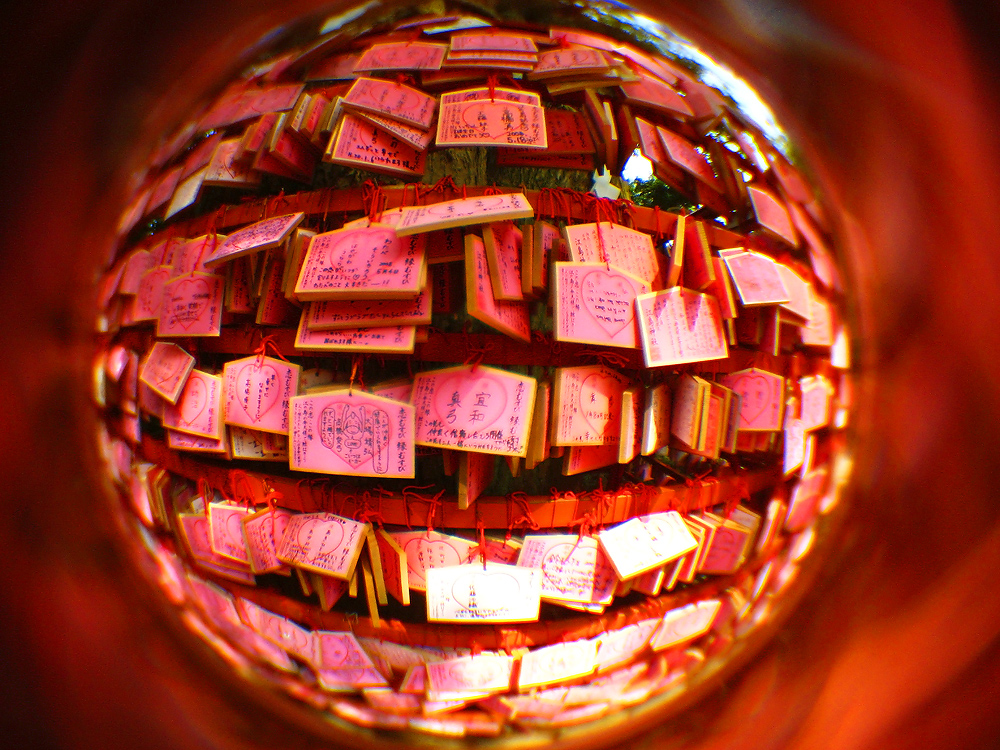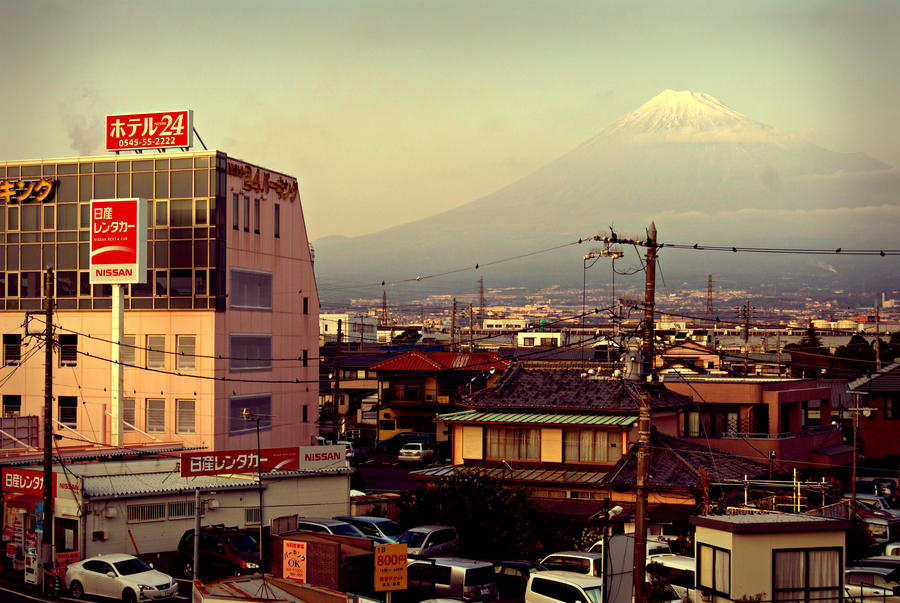I continued my
Tokyo adventures after two days away from the capital (which I’ll share in the
next post), starting from Akihabara (秋葉原), district known for its electronics, all weirdness
associated with manga and anime – from shops selling merchandise to so called
maid cafes – and the recently very popular pop band, AKB48 (AKB from
AKihaBara).
In fact how much one spends there depeneds only on an
individual. And maybe their wallet.
If someone’s looking for cheap electronics, you could spend days in Akihabara,
walking from shop to shop and comparing prices. A lot of them offer stuff that’ll
work in foreign countries, I think in all of them, if you spend more than a
certain amount, you get a tax return (straight away, according to the
Internet), and if you’ve the time, the energy and the will, it’s certainly
worth going further to browse through the used electronics shops. In Japan even
used things, be it clothes or electronics, are usually in very good condition
and with electronics you just have to watch out for whether you’ll be able to
use it back home. In this case knowing Japanese or having someone who does
certainly helps, but at the same time a lot of the shops, especially those with
new stuff, have foreign staff, from India or China, who will know some English
(and probably some other foreign languages too).
In my opinion,
even though I’ve only walked around the bigger stores and looked only at
cameras and laptops, you’re probably best off if you either buy things that
aren’t available in the West (some are definitely to be found, when you look),
or looking through used stuff. After all, Japan isn’t the cheapest of countries
and while I understand that for the Japanese a 50% off laptops from Y100’000 to
Y50’000 makes a difference (here a price for a made in Japan Toshiba laptop, 17”
if I remember correctly), tourists can probably find better deals on sales in
their own countries or looking through the Internet. Sure, it may not be a Made
in Japan Toshiba, but then if price is the most important, then you probably
won’t be looking at Made in Japan Toshiba anyway, will you?
Since I’m not
that big on manga or anime, I did not go to those shops. As a curiosity, I went
to the kind of famous seven storey sex shop, m’s, but I admit, I left slightly
disappointed. Sure, seven storeys sounds impressive, makes you wonder how much
could they possibly have there, yet in reality one floor is the size of a small
studio flat. Moreover, and against expectations, after all many of us have
heard of Japanese porn, maybe even seen some, I didn’t find that many weird
things. I didn’t look at the films, no outrageous costumes or lingerie, some
toys were more electronified, but still things you could find in the West…
Probably the only real oddity was the realistic sex dolls. They did not look
like real girls, but they also weren’t your standard cheap blow up plastic
ones. More interesting than the dolls themselves were the accessories:
everything from clothes and wigs all the way to bigger boobs. Like person, like
doll?
I’m also not a
fan of AKB48, most of the time they make me cringe because of the
objectification and sexualisation of those girls (one double entendre on top of
another in the video clips, voters being mainly middle-aged men and not
teenagers, and the youngest members being about thirteen – how can one not
cringe?), but I couldn’t help noticing that AKB48 was everywhere. They even
have their own café, right by the train station, where, if you’re lucky, you
can drink something, buy some merchandise and maybe watch a music video or a
concert on the TV. Though even if I was a fan, the queue would probably
discourage me…
After Akihabara
it was time for Roppongi (六本木).
Roppongi is basically made out of clubs and it’s rather pointless to go there
during the day. Were it not that I had an appetite for trying Japanese
burlesque, I’d probably never go there just because I’m not the clubbing type.
Now I know that I’d regret a little, since other than clubs there’s plenty of
foreign cuisine, which is more to my taste – I wanted to eat something in the
Russian one, to satisfy my Eastern European cravings, but unfortunately that
day was impossible to get in without a reservation. Pity.
As it turned out, I also didn’t get to experience
Japanese burlesque. At first I was
put off by the price: on a half-price deal it was still over Y8000 for one
hour! That’s about £46 – the Wet Spot in Leeds, which I try to go as often as
possible, is only £12 for the whole night! Later, upon closer inspection of the
poster, I was put off by another thing: in Japan burlesque was grouped together
with host clubs. What’s a host club? Let’s put it this way, a modern day host club
is what a teahouse is for a geisha: a place to entertain your client, pour his
drinks, and flirt with him. I’ve no idea how Japanese burlesque performers can
agree to this, especially since I know some of them performed in the US or the
UK where burlesque is, well, burlesque, closer to theatres than strip clubs,
but it’s probably not up to me to dwell into that. I feel that even if I did
try going in, I’d either be denied entry, or felt extremely uncomfortable and
unsafe.
So instead I
went briefly to Korea Town, Shin-Ōkubo (新大久保), where I had one of my favourite dishes in the
world, bibimbap. Also for the first time I had the chance to try some Korean
salads with this and out of three that I was served only one was a tad weird.
 |
| Bargain! |
 |
| Practically giving it away for free! |
 |
| The furthest one was a bit weird. The other two - delicious! |
 |
| Bibimbap! |
My adventures
continued in Chiyoda (千代田), where the
Imperial Palace and government buildings are. I figured that since I’m not only
a Japanologist, but also a student of Japanese Politics, it’d be a sin not to
see the place where the politicians argue, where the PM has his office etc. In
the end I was glad I did some research and knew what to expect, as most of the
buildings looked more like plain offices than government offices. On the one
hand I can get that: in the past Tokyo was frequently destroyed by fires, and
then during WWII it was quite heavily bombed, but it’s still a little weird to
me, especially compared to buildings of the parliaments in other countries. Of
them all only the National Diet Building, Kokkai Gijidō (国会議事堂), is genuinely pretty to look at.
 |
| The National Diet Building. |
 |
| The National Diet Building. |
 |
| Not sure if that's their HQ, but the banner on top does have the name of the party currently in power, the LDP, Jiyū-Minshutō. |
As it also
turned out, a Japanese Politics student can’t just walk around that area. I saw
some poster and stopped to read what it was about. A brief moment later a lady
attending to it came up and we ended up having a short conversation, once we
established that I can speak and read Japanese. The poster was spreading
awareness about the suppression of Falun Gong practitioners in China. It ended
up with me getting not just leaflets and a translated paper by some Canadian
lawyer, but also a Y3000 gift card to access the TV channel about that ran by
some Chinese people living in the US. “Because you’re a student”, that’s what
the lady said. I’m telling you: if you study Japanese Politics, you can’t walk
around there without getting yourself involved in something.
Once that sunk in,
I headed for the Palace. It just happened that that day was rainy, which wasn’t
great for visiting the gardens, but I did see something. Let me put it this
way: it’s good that the Emperor has his gardens coz otherwise he’d be looking
out of the window at unattractive buildings – and people would be looking into
his bedroom. Moreover, after visiting the Kanazawa Castle, for someone who’s
not an expert, like me, the Imperial Palace looks very similar, at least on the
outside. Since the imperial family lives there, it’s not accessible for the
public; for a small fare Eastern Gardens can be visited, but that’s it.
That same day very
unexpectedly I also had a chance to meet another Tokyo celebrity, the great, one
and only… Godzilla! Yes, purely by chance, not even knowing that it existed and
not looking for it, while looking for a nice place for lunch, I stumbled upon
Godzilla’s statue. If anyone’s interested and going to Tokyo, then from the
Palace head for the buildings and then, entering the widest street, keep
straight until the next turn right.
While looking
for a place to rest a bit – again, accidentally – I ended the day in Yūrakuchō
(有楽町). There’s
nothing unusual there, some shops, shopping centres etc., but for me it was
another little geek out, as one of my favourite Japanese songs is entitled „Yūrakuchō
de aimashō” (eng. „Let’s Meet in Yūrakuchō”). And even though not it’s just
another urban piece of town, at night, once the Christmas lights were lit, I
could easily imagined what Yūrakuchō must’ve looked like in the 50’s, when
Frank Nagai was singing about it. Even now it’s a slightly posher bit of the
city, so sixty years ago it must’ve seemed even more luxurious…
And essentially
this is where my stories of Tokyo itself end. I definitely planned more time
for it than I really needed and about 3-4 days before departure I was missing
Kanazawa (where there are places to rest and some greenery, where the people
seem a bit friendlier, nevermind that there’s less of them). Sure, there’s
plenty of places I didn’t visit, but I think that the most Tokyo-like ones I
got to know well enough, especially Harajuku and Shibuya, where there were so
many things to buy. I also came to the conclusion that I wouldn’t be able to
live there, there’re too many people – though at the same time I can’t say that
I dislike Tokyo. It’d probably be different if I had a place I could call my
own as opposed to just being a guest, but still, I found the places around
Tokyo charmed me a lot more. In the end I don’t have to decide whether to live
there or not; I did return with some cute stiff and good memories, even if very
tired, and in its own way Tokyo has managed to find a tiny spot in my heart.


















































